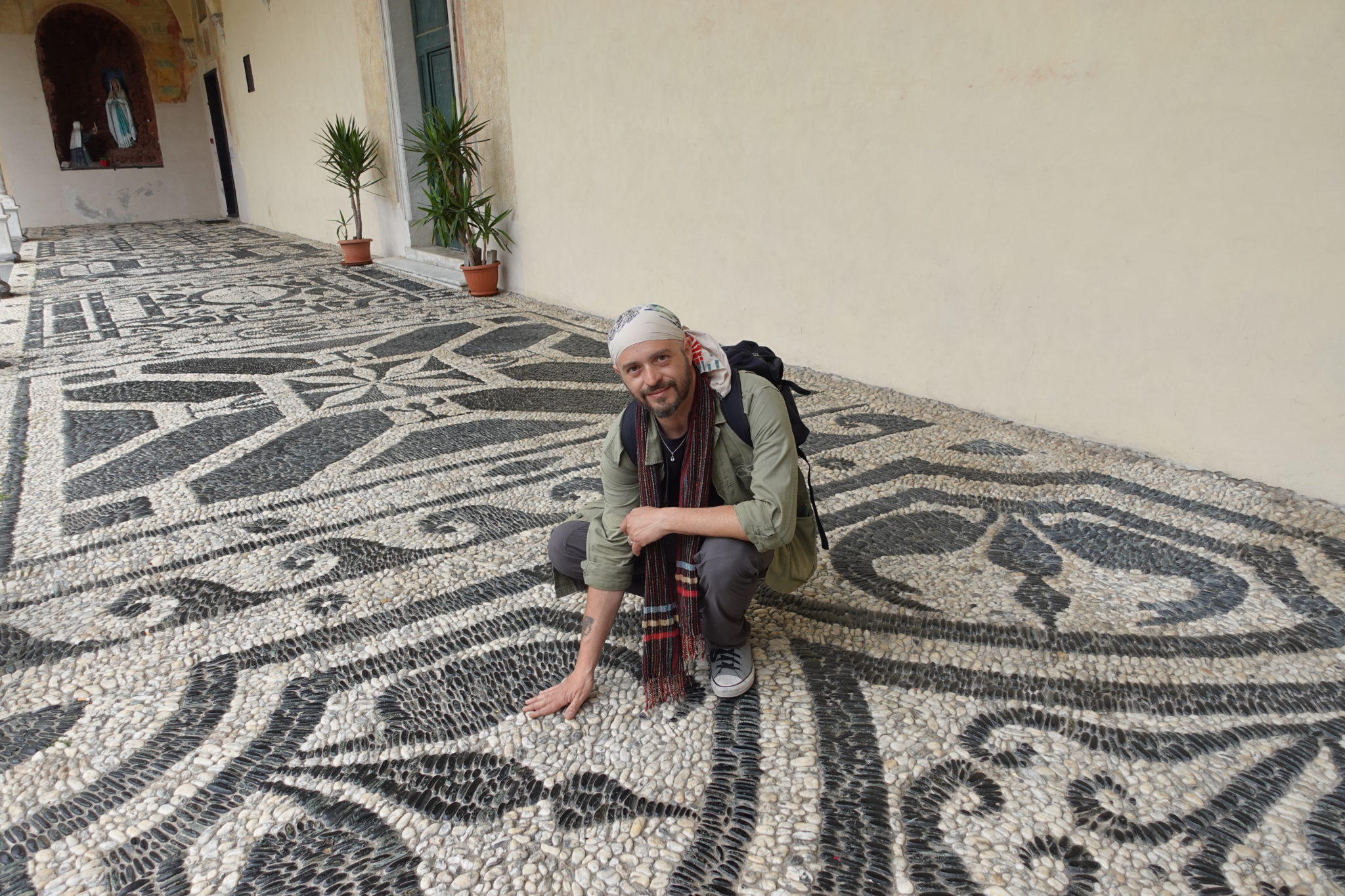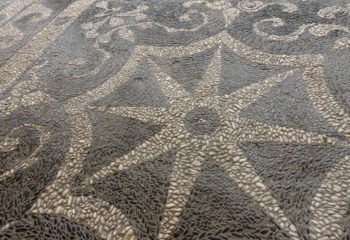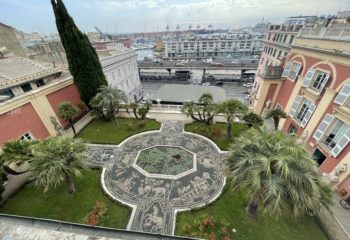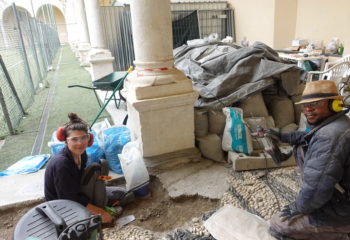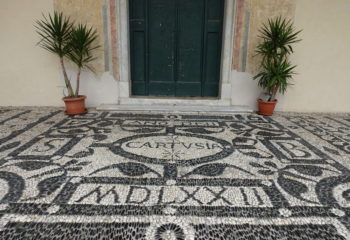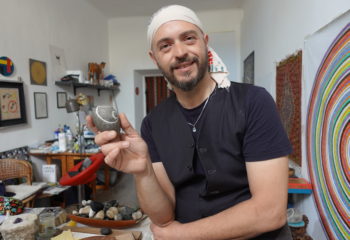Leggi la versione italiana
“My business was born from an ancestral passion: like many children I was attracted by pebbles. What do I perceive in the pebble? A humble element, but at the same time a treasure. It comes off the mountain, is carried by the stream and reaches the sea.” From his studio in downtown Genova, Gabriele Gelatti, 49, tells of his passion for river pebbles. Humble, yet precious elements. True treasures of nature. Precious mosaic tiles: pebble mosaics, precisely. Protagonists of an ancient Ligurian tradition: the “Rissieu”. Perhaps the world’s first form of mosaic. For CNA Storie, Gabriele tells how nature’s humble materials are selected one by one to compose very complex and enduring designs. For the restoration of ancient mosaics, as well as the manufacture of gardens, pools and spas.
In the pebble, the history of the land
“The pebble contains in itself a description of the landscape: we find it on the beach, but it speaks of the mountain behind it.” Risseu is a timeless art form that spans the centuries. In Genova it can be found in the Palazzo Reale and in the parish of San Bartolomeo, at Certosa. That’s where we meet Carlotta, an intern and Aoustin Jostin, an apprentice, now working on the restoration of some sections of flooring in the cloister. “The art of pebble mosaic I could teach in an afternoon to a bright and interested person. But it’s those crafts that need a lot of practice. It also takes a decade to train a good mosaicist,” Gabriele says. A story of knowledge transmission, but to that much more. “The apprentice is a boy from Biafra,” he relates. I met him during a teaching in a social workshop. When I met him, I was impressed by his manual skills. He was really good at it. Maybe it was because he lived in a context where people were used to making things with their hands.”
The pebble contains within itself a description of the landscape
Mosaicists, between art and craftsmanship
Care, passion, study and research inspire a pebble mosaicist. A business halfway between art and craft, but still relegated to a second-class role.
“In Italy we are lagging behind. We have an incredible heritage of arts, crafts and traditions that unfortunately we have relegated to manual activities for people with little culture,” Gabriele reflects. In Italy there is an urgent need for the establishment of a regulated register of artistic crafts. Fundamental is to understand that knowing how to do is an integral part of cultural heritage.”
Know-how is an integral part of cultural heritage
Pebble mosaics, dry stone walls and pavements are the link between nature and a fragile territory like Liguria. “They are all arts of interlocking traditional stone,” Gabriele explains. Works that have a common basis: they all contribute to the maintenance of the territory. Hence the urgency of handing down this craft and creating an attractive horizon for new generations because we will need more and more specialized people in the future.” Artisans capable of transforming a raw material, as humble as stones, into masterpieces.

